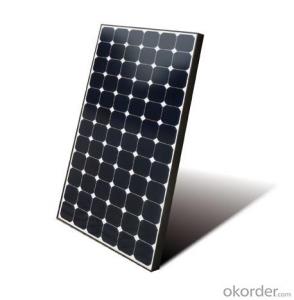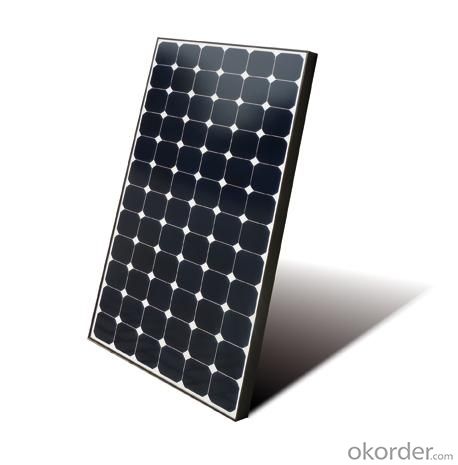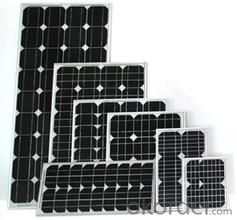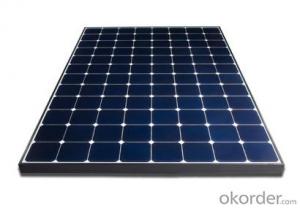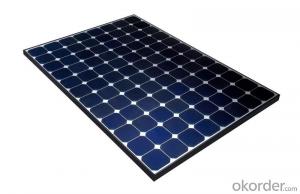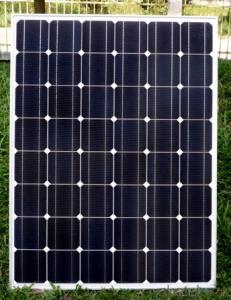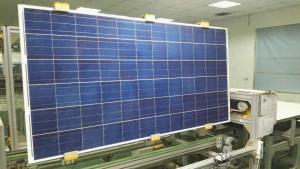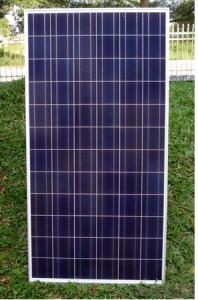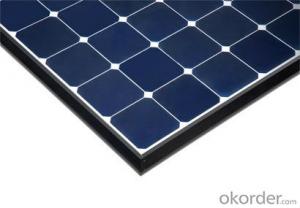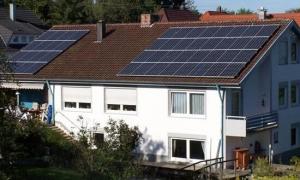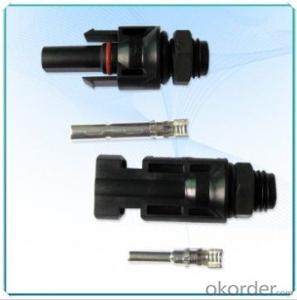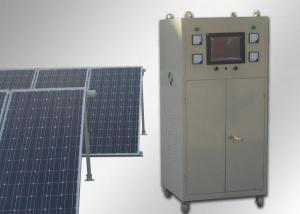Satellite Solar Energy Systems - CNBM Poly 2000W Off Grid Solar System with 10 Years Warranty
- Loading Port:
- Shanghai
- Payment Terms:
- TT OR LC
- Min Order Qty:
- 100 watt
- Supply Capability:
- 1000 watt/month
OKorder Service Pledge
OKorder Financial Service
You Might Also Like
Specification
CNBM Poly 2000W Off Grid Solar Sytem with 10 Years Warranty
Product description
Off-the-grid is a system and lifestyle[1] designed to help people function without the support of remote infrastructure, such as anelectrical grid. In electricity, off-grid can be stand-alone power system or mini-grids typically to provide a smaller community with electricity. Off-grid electrification is an approach to access electricity used in countries and areas with little access to electricity, due to scattered or distant population. The term off-the-grid (OTG) can refer to living in a self-sufficient manner without reliance on one or more public utilities. People who adopt this lifestyle are called off-gridders.[2]
In Africa, small and inexpensive pico solar electric lights and solar home systems are becoming readily available. Inexpensive solar panels, lithium ion batteries and high-efficiency LED lights make the systems affordable.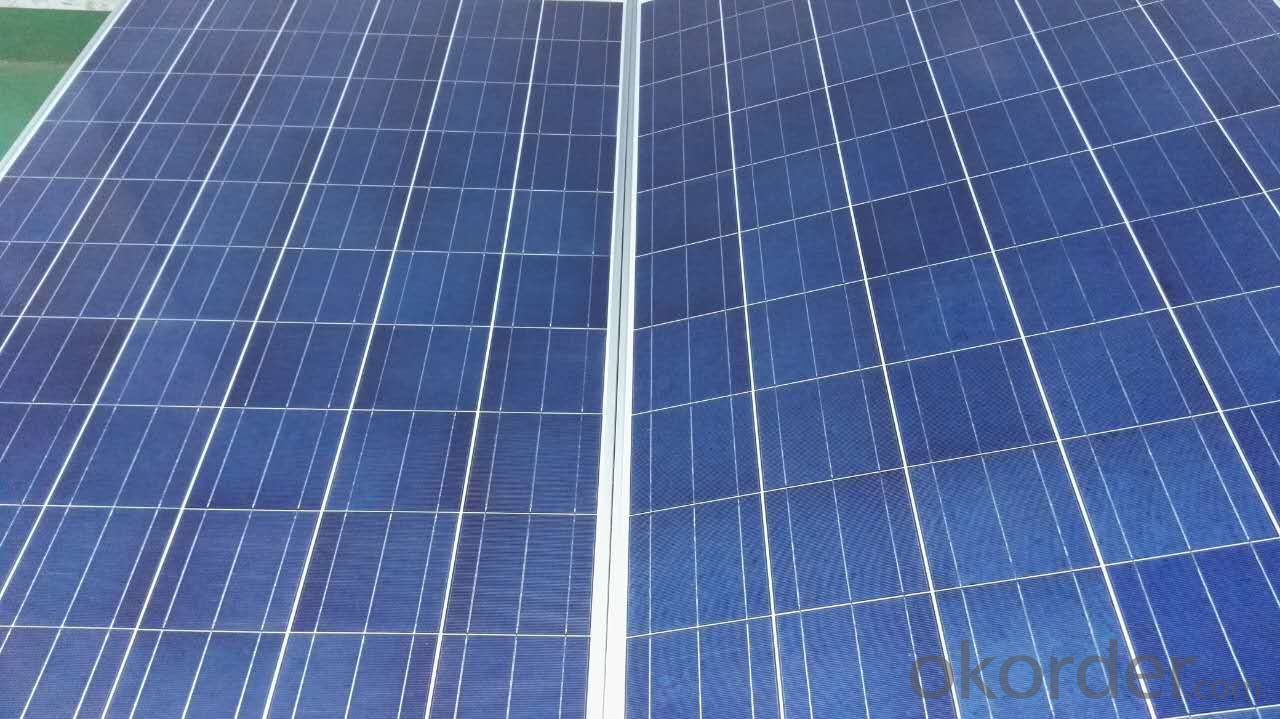
Application
Residential
Commercial
Industrial
Feature
Off-the-grid homes are autonomous; they do not rely on municipal water supply, sewer, natural gas, electrical power grid, or similar utility services. A true off-grid house is able to operate completely independently of all traditional public utility services. The idea has been recently popularized by certain celebrities including Ed Begley, Jr.[3] who stars in the Living with Ed[4] television show on the Home & Garden Television (HGTV) network. Actress Daryl Hannah promotes off-grid living and constructed her home in Colorado according to those principles, as does survival expert and Dual Survival co-star Cody Lundin,[5] who lives in a self-designed, passive solar earth house in the high-desert wilderness of Northern Arizona, collecting rainwater, composting waste, and paying nothing for utilities.[6][7]
Packaging
With carton and box
- Q: How does the efficiency of solar panels vary across different roof types?
- Solar panel efficiency can differ depending on the type of roof due to various factors. One of the primary factors is the roof's orientation and tilt. Solar panels work best when they face the sun directly, ideally at a tilt that matches the latitude of the location. Consequently, roofs that face south and have an appropriate tilt generally have higher efficiency. Roof shading is another important consideration. If trees, buildings, or other objects cast shadows on the roof, it can significantly reduce the efficiency of solar panels. Even partial shading on a small part of the roof can impact the overall performance of the entire solar system. The material and condition of the roof can also affect efficiency. Certain roof materials, like metal or asphalt shingles, can reflect sunlight and improve the overall efficiency of solar panels. Conversely, roofs covered in dirt, debris, or damaged areas may lower efficiency as they can obstruct or hinder the absorption of sunlight. The size and shape of the roof also play a role. Roofs with more surface area can accommodate more solar panels, generating more electricity. Additionally, roofs with simple shapes, such as flat or slightly sloped roofs, are generally more suitable for efficient solar panel installation compared to complex roof designs with numerous angles and obstacles. Lastly, local climate and weather patterns can impact solar panel efficiency. Areas with abundant sunlight throughout the year typically have higher efficiency compared to regions with frequent cloud cover or limited sun exposure. In conclusion, solar panel efficiency can vary depending on factors such as orientation, shading, roof material and condition, size and shape, as well as local climate and weather patterns. Seeking guidance from a solar professional can help determine the optimal solar panel system for a specific roof type, maximizing energy production and efficiency.
- Q: What is the role of maximum power point tracking (MPPT) in a solar energy system?
- The role of maximum power point tracking (MPPT) in a solar energy system is to optimize the efficiency and output of the system by continuously tracking and adjusting the operating point of the solar panels to the maximum power point. This ensures that the panels are operating at their peak power production, maximizing the amount of energy captured from the sunlight and increasing the overall efficiency of the solar energy system.
- Q: Can solar energy systems be used for powering electric vehicle repair and maintenance facilities?
- Certainly, electric vehicle repair and maintenance facilities can utilize solar energy systems to power their operations. The facility can choose to install solar panels either on their rooftops or in the vicinity, enabling them to capture sunlight and convert it into electrical energy. This renewable energy source can then be used to operate the necessary equipment and tools for repairing and maintaining electric vehicles. By utilizing solar energy, repair and maintenance facilities can significantly decrease their dependence on traditional electricity grids and fossil fuel-based energy sources. This not only aids in reducing operational costs but also plays a role in minimizing the facility's carbon footprint, thus promoting sustainability and environmental responsibility. Furthermore, solar panels are particularly suitable for installation in electric vehicle repair and maintenance facilities due to the availability of large roofs or open spaces. Any surplus electricity generated during daylight hours can be stored in batteries or fed back into the grid, ensuring a continuous and uninterrupted power supply even when faced with cloudy or nighttime conditions. Additionally, solar energy systems can be used to directly charge electric vehicles themselves. By installing electric vehicle charging stations that are connected to the solar panels, the facility can provide customers with the option of renewable energy charging, making it more appealing for electric vehicle owners. In conclusion, employing solar energy systems to power electric vehicle repair and maintenance facilities is a sustainable and economically feasible solution that aligns with the increasing adoption of electric vehicles and the imperative to reduce greenhouse gas emissions.
- Q: Can solar energy systems be used for powering amusement parks?
- Yes, solar energy systems can definitely be used for powering amusement parks. With the advancements in solar technology and the ability to harness and store solar energy, amusement parks can install solar panels to generate electricity and meet their power requirements. Solar energy systems can be integrated into the park's infrastructure, such as on rooftops, parking lots, or open spaces, to provide clean and sustainable energy for rides, lighting, and other operational needs. Additionally, solar power can help reduce carbon emissions and operating costs, making it an environmentally friendly and economically viable solution for powering amusement parks.
- Q: Can solar energy systems be used in powering electric fences or security systems?
- Yes, solar energy systems can certainly be used in powering electric fences or security systems. Solar panels can generate electricity by converting sunlight into energy, which can then be stored in batteries or used directly to power various devices. This makes solar energy systems a practical and sustainable choice for powering electric fences or security systems, especially in remote or off-grid locations where traditional power sources may be unavailable or unreliable. Solar-powered electric fences can effectively deter intruders or keep animals within a designated area, while solar-powered security systems can provide continuous surveillance and monitoring without the need for a constant supply of electricity. Additionally, solar energy systems are environmentally friendly and can help reduce carbon emissions associated with conventional power sources, making them an increasingly popular and cost-effective solution for powering various applications, including electric fences and security systems.
- Q: Can solar energy systems be used in areas with limited access to information technology?
- Yes, solar energy systems can be used in areas with limited access to information technology. Solar energy systems primarily function using photovoltaic cells that convert sunlight into electricity, which does not require frequent monitoring or maintenance. These systems can be installed and operated without the need for complex information technology infrastructure. Therefore, even in remote or underdeveloped areas with limited access to information technology, solar energy systems can still be effectively utilized to provide sustainable and reliable power.
- Q: Can solar energy systems be used in powering banks or financial institutions?
- Yes, solar energy systems can definitely be used to power banks or financial institutions. In fact, many banks and financial institutions worldwide are adopting solar energy systems as a sustainable and cost-effective solution for their power needs. Solar energy systems consist of photovoltaic (PV) panels that convert sunlight into electricity. These panels can be installed on the rooftops or open spaces surrounding banks and financial institutions. The generated electricity can then be used to power various operations within these institutions, including lighting, air conditioning, computers, ATMs, and other electronic devices. There are several reasons why solar energy systems are advantageous for banks and financial institutions. Firstly, they provide a reliable and continuous source of electricity, reducing the dependence on the traditional power grid. This ensures uninterrupted operations and minimizes the risk of power outages, which is critical for financial institutions that need to maintain constant access to their systems. Furthermore, the use of solar energy helps banks and financial institutions reduce their carbon footprint and contribute to environmental sustainability. By utilizing renewable energy, they can significantly reduce greenhouse gas emissions and help combat climate change. This aligns with the increasing focus on corporate social responsibility and sustainable practices among businesses. Additionally, solar energy systems provide long-term cost benefits. While the initial installation cost may be higher compared to traditional energy sources, solar systems have low operating and maintenance costs. Over time, the savings on electricity bills can be substantial, allowing banks and financial institutions to allocate those funds towards other investments or initiatives. Moreover, the installation of solar panels can enhance the reputation and branding of banks and financial institutions. By visibly demonstrating their commitment to renewable energy, they can attract environmentally conscious customers and investors who value sustainable practices. In conclusion, solar energy systems are highly suitable for powering banks and financial institutions. They offer a reliable, sustainable, and cost-effective solution, allowing these institutions to meet their power needs while reducing their environmental impact and enhancing their reputation in the market.
- Q: What is the difference between on-grid and off-grid solar energy systems?
- The main difference between on-grid and off-grid solar energy systems lies in their connection to the utility grid. On-grid systems are connected to the electric grid, allowing for the seamless exchange of energy between the solar system and the grid. This means that excess electricity generated by the solar panels can be sent back to the grid, while electricity can also be drawn from the grid when solar production is low. Off-grid systems, on the other hand, are not connected to the grid and operate independently. They typically rely on batteries to store excess energy for use during periods of low solar production. Off-grid systems are commonly used in remote areas where grid connection is not available or in situations where individuals prefer to be self-sufficient and not rely on the grid.
- Q: Can a solar energy system be installed on a building with multiple levels?
- Installing a solar energy system on a building with multiple levels is indeed possible. The installation process relies on several factors, including the available space, orientation, and structural integrity of the building. In the case of multi-level buildings, solar panels can be placed on the roof, balconies, or other suitable areas that receive sufficient sunlight. To optimize energy generation, it may be necessary to install multiple solar arrays on different levels, depending on the building's design and layout. Additionally, it is crucial to ensure that the building's electrical infrastructure can support the installation of a solar energy system. By carefully considering and planning the building's characteristics, a successful installation of a solar energy system on a multi-level building can be achieved.
- Q: How do solar energy systems impact community resilience?
- Solar energy systems can significantly enhance community resilience in various ways. Firstly, by reducing reliance on traditional energy sources, such as fossil fuels, solar energy systems help mitigate the impact of power outages and disruptions caused by natural disasters or other emergencies. This ensures that critical infrastructure, such as hospitals, emergency services, and communication networks, can continue to function during challenging times. Moreover, solar energy systems promote energy independence and self-sufficiency at the community level. By generating clean and renewable energy locally, communities can reduce their dependence on centralized power grids, making them less vulnerable to disruptions in the energy supply chain. This decentralized energy production also decreases the risk of cascading failures and enhances the overall stability of the energy system. Furthermore, solar energy systems contribute to the economic resilience of communities. They create jobs in the installation, maintenance, and manufacturing sectors, fostering local economic growth and reducing unemployment rates. Additionally, solar energy can lower energy costs for residents, businesses, and public institutions, freeing up resources that can be invested in other resilience-building initiatives. Overall, solar energy systems play a crucial role in enhancing community resilience by providing reliable and sustainable energy, reducing dependence on centralized grids, promoting economic growth, and mitigating the impact of climate-related disasters.
Send your message to us
Satellite Solar Energy Systems - CNBM Poly 2000W Off Grid Solar System with 10 Years Warranty
- Loading Port:
- Shanghai
- Payment Terms:
- TT OR LC
- Min Order Qty:
- 100 watt
- Supply Capability:
- 1000 watt/month
OKorder Service Pledge
OKorder Financial Service
Similar products
Hot products
Hot Searches
Related keywords
